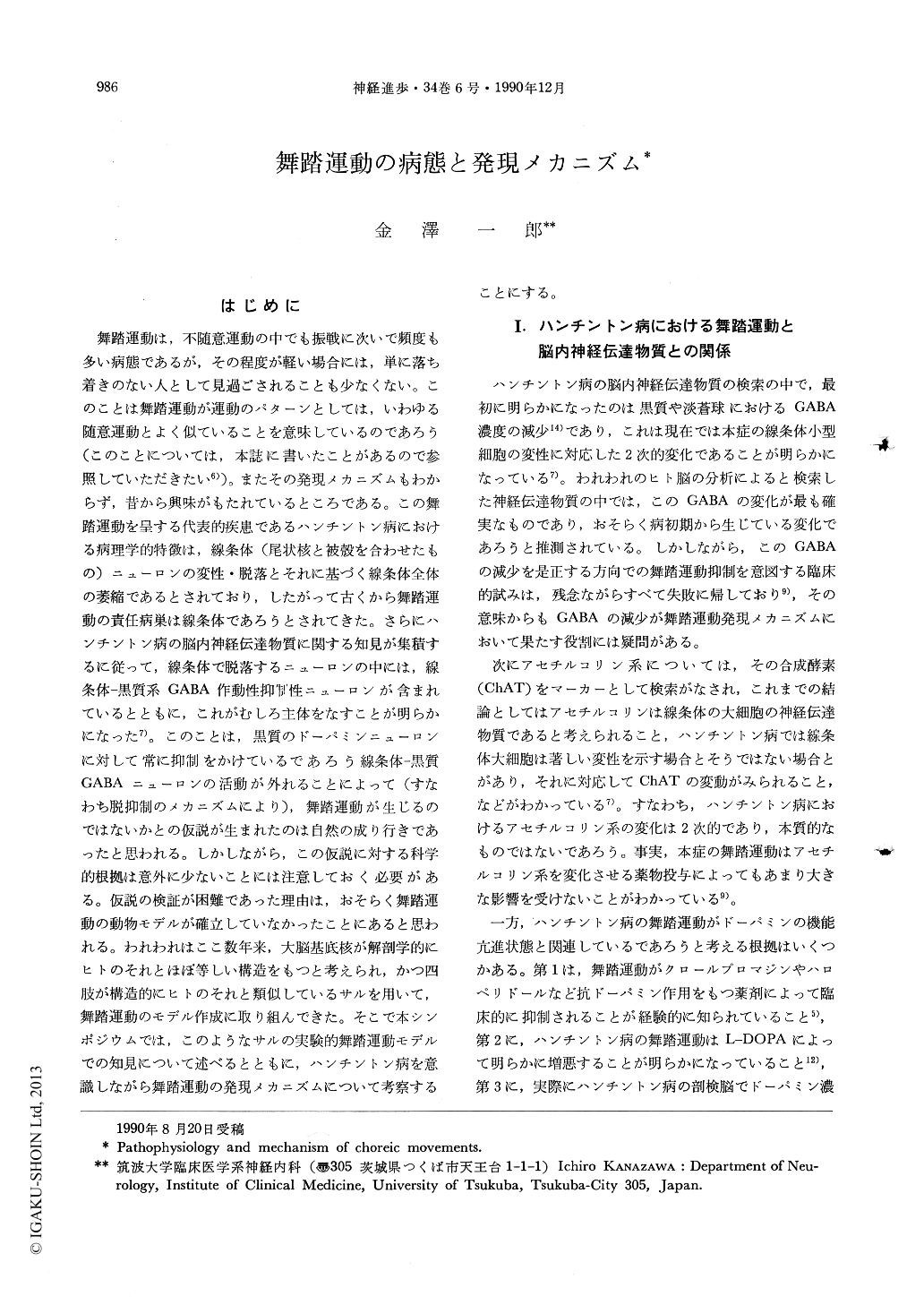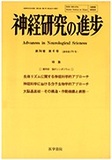Japanese
English
- 有料閲覧
- Abstract 文献概要
- 1ページ目 Look Inside
はじめに
舞踏運動は,不随意運動の中でも振戦に次いで頻度も多い病態であるが,その程度が軽い場合には,単に落ち着きのない人として見過ごされることも少なくない。このことは舞踏運動が運動のパターンとしては,いわゆる随意運動とよく似ていることを意味しているのであろう(このことについては,本誌に書いたことがあるので参照していただきたい6))。またその発現メカニズムもわからず,昔から興味がもたれているところである。この舞踏運動を呈する代表的疾患であるハンチントン病における病理学的特徴は,線条体(尾状核と被殻を合わせたもの)ニューロンの変性・脱落とそれに基づく線条体全体の萎縮であるとされており,したがって古くから舞踏運動の貴任病巣は線条体であろうとされてきた。さらにハンチントン病の脳内神経伝達物質に関する知見が集積するに従って,線条体で脱落するニューロンの中には,線条体―黒質系GABA作動性抑制性ニューロンが含まれているとともに,これがむしろ主体をなすことが明らかになった7)。このことは,黒質のドーパミンニューロンに対して常に抑制をかけているであろう線条体―黒質GABAニューロンの活動が外れることによって(すなわち脱抑制のメカニズムにより),舞踏運動が生じるのではないかとの仮説が生まれたのは自然の成り行きであったと思われる。
Choreic movement is one of the most important involuntary movements caused by the basal ganglia damage. Although informations on anatomical, physiological and biochemical properties of the basal ganglia aceummulate much abundant, the underlying neural mechanisms of choreic movements are still incomplete. The purpose of the present paper is to describe our own primate model of choreic move-ment induced by the kainic acid lesions of the striatum combined with the administration of L-DOPA. In addition, the proposed hypothesis for the mechnisms of choreic movements are discussed.

Copyright © 1990, Igaku-Shoin Ltd. All rights reserved.


